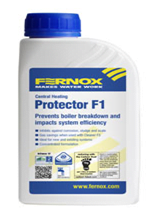Because all heating systems are made up from a lot of different components manufactured from different metals it is now just standard practice to add inhibitor to the water in every central heating system especially since boiler manufacturers have recently started to manufacture their expensive heat exchangers from aluminium.
Apart from the cost saving on expensive component parts failing there has been the added realisation that there are energy and money savings to be had with a properly cleaned and treated central heating system, many people are increasingly becoming aware and have become interested in trying to achieve some of these benefits in their own properties.
However, when it comes to adding the treatment to the system, the process can be a little daunting. But with a corrosion and scale inhibitor, there is a choice and a few simple options.
Most inhibitors will be contained in one litre bottle which can be sufficient to treat an average central heating system which we estimate to be 8 radiators. If you have a system with more than 8 radiators, use two bottles, and don’t worry, the product is forgiving of some overdosing but be sure to always check the manufacturers dosing recommendations.
To dose into the system, first simply determine what kind of system you have if you dont already know. There are two kinds of heating system, they are open vented and sealed. If you have two water tanks in the loft, you likely have an open vented system and the system expansion tank is usually the smaller of these two water tanks.
To add the inhibitor, simply partially drain the system from a low point such as a downstairs radiator before adding it to the expansion tank and refilling the system with fresh water through the expansion tank. If there is only one tank in the attic, your system is sealed and can be dosed using a dosing kit via the boiler filling loop or other access point.
The two leading brands of central heating inhibitor in the UK are Sentinel and fernox.



